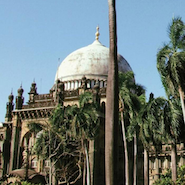- About
- Subscribe Now
- New York,
August 17, 2015

 Image from Four Seasons Mumbai
Image from Four Seasons Mumbai
Luxury brands must continue to optimize Web performance to succeed in the rapidly growing Indian ecommerce market, according to a new report by Catchpoint.
Web pages that fail to load at an acceptable rate discourage consumers and result in fewer sales. Despite the fact that most luxury brands have content-heavy sites, many loaded significantly faster than the sites of non-luxury brands, marking an impressive feat for the industry.
Instant gratification
Consumers expect and prefer a Web site to load in the range of 2-3 seconds and be active 24 hours a day, 365 days a year. Even a Web site operating at 99 percent efficiency will still experience inevitable unplanned downtime that can have a significant impact on sales.
Audi is one of the luxury brands that has been successful in India
Oftentimes brands will optimize a Web site for their country of origin but neglect to spend the money and effort for other markets. This is a mistake that can have a major negative impact on a brand, considering the rate at which new markets are growing.
India has a particularly vibrant ecommerce market with 300 million Internet users, making it the world’s second largest market after China. Additionally, India’s rapid online growth has led experts to speculate that it may mature much faster than other regions.
Specifically targeting ecommerce strategies to succeed in India will allow luxury brands access to this growing group of consumers. Decreasing loading times and improving performance is an excellent place to start.
Patek Phillipe has a significant presence in India
Though there is still work to be done, luxury brands have been more successful in tackling the Indian ecommerce market than other non-luxury brands. Catchpoint found that the 22 luxury brands it surveyed, such as Audi and Patek Philippe, loaded 33 percent faster than the 32 non-luxury brands surveyed.
This is especially impressive as luxury brands were also shown to have more content-rich sites featuring video and images. Luxury brands were found to be 55 percent “heavier,” or more content-full, than non-luxury brands.
Despite these impressive findings, it is important for luxury brands to continue working to improve their online performance in India. Consistent monitoring, site slimming and content compression can help brands work to optimize their ecommerce availability.
Need for speed
A slow loading time can be a significant obstacle for brands in any market. Many global brands have Web sites in China that take up to 20 seconds to load, a wait time that inevitably impacts consumer interaction, according to similar report by Catchpoint Systems.
The “Great Firewall of China” harries Web sites based elsewhere and those that reference servers outside of the country. Oftentimes these references are minor and superfluous, such as an option for Facebook, a site banned in the country, and therefore serve no purpose on any Web site in China (see story).
While luxury brands performed well in India, other markets could use more attention. Luxury brands occasionally struggle to present Chinese consumers with a seamless Web experience due to the country’s tight Internet rules.
Slower load times on brand Web sites, especially when concerning ecommerce, can quickly lead to abandoned pages and carts. For luxury brands that want to tap the immense ecommerce potential in China, shoring up fundamental Internet problems is the first step (see story).
Final Take
Kay Sorin, editorial assistant on Luxury Daily, New York
Share your thoughts. Click here